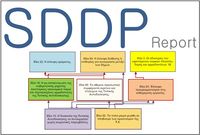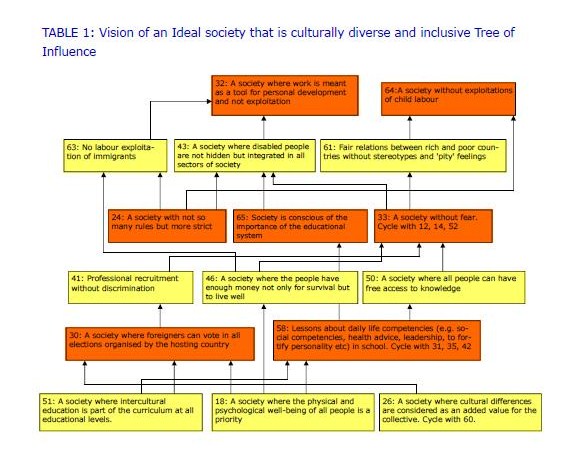SDDP UCYVROK Italy - Obstacles: Difference between revisions
No edit summary |
No edit summary |
||
| Line 3: | Line 3: | ||
Opportunities and Knowledge ( <!-- Append to variable acronym the content acronym of the sdd report --> | Opportunities and Knowledge ( <!-- Append to variable acronym the content acronym of the sdd report --> | ||
|book_image=SDDP_Report_Image.jpg <!-- You can replace all the template's variables with the appropriate content--> | |book_image=SDDP_Report_Image.jpg <!-- You can replace all the template's variables with the appropriate content--> | ||
|report_title= | |report_title=Youth promoting Vulnerable Groups’ Rights, | ||
Opportunities and Knowledge. | |||
|Triggering_Question=What are descriptors of an ideal society that is culturally diverse and inclusive? | |Triggering_Question=What are descriptors of an ideal society that is culturally diverse and inclusive? | ||
|project=[[UCYVROK-Uniting for Citizenship and Participation]] | |project=[[UCYVROK-Uniting for Citizenship and Participation]] | ||
Revision as of 23:17, 7 August 2012
|
Executive Summary
This interactive workshop based on the Structured Dialogic Design Process (SDDP) was organised
as part of the project “Uniting for Citizenship and participation: Youth promoting Vulnerable group’s
Rights, Opportunities and Knowledge (UCYVROK)”. The main aim of this project is to inform and
mobilise young individuals from less privileged groups and actively promote youth citizenship. The
project also aims at promoting feelings of solidarity, communication and understanding among
youths of Europe and together work towards promoting European cooperation. The project engages
stakeholders to exchange expertise and share best practices of youth organisations working on issues
of cultural diversity, human rights, inclusion, empowerment and active citizenship. The main
goal is to develop a joint vision of European Youth based on generally abiding principles of human
rights, inclusion and cultural diversity. The project team will also develop a Joint Action Plan encouraging
increased participation of less privileged youth in European led activities.
The Triggering Question (TQ1) was:
What are descriptors of an ideal society that is culturally diverse and inclusive?
In response to the TQ1, the 9 participants came up with 65 characteristics, which were categorized in 8 clusters. Following the voting process, 23 ideas received one or more votes and were structured to create the influence MAP shown below.
According to the participants of this workshop, appear to be the most influential were:
- Characteristic #51,A society where intercultural education is part of the curriculum at all educational levels.
- Characteristic #18,A society where the physical and psychological well-being of all people is a priority.
- Characteristic #26,A society where cultural differences are considered as an added value for the collective.Cycle with 60.
The Triggering Question (TQ2) was:
What are obstacles that prevent us from reaching our ideal society that is culturally diverse and inclusive?
In response to the TQ2, the 9 participants came up with 78 characteristics, which were categorized in 9 clusters. Following the voting process, 27 ideas received one or more votes and were structured to create the influence MAP shown below.
According to the participants of this workshop, appear to be the most influential were:
- Characteristic #24,Lack of open communication between citizens and leaders.
- Characteristic #6,People in general think about their family problems.They don't want or don't have time to think about the other problems of the society.
- Characteristic #76,Young people do not have the opportunity to express their own ideas.
The workshop was facilitated by Yiannis Laouris, Kerstin Wittig, and Larry Fergeson. The workshop was attended by 9 participants from Italy, France, Greece, Germany and Cyprus. In sum, the participants of the dialogue reported their satisfaction that their voices have been heard and documented and communicated their expectations for follow-up activities to address the diagnosis of their needs.
Sponsor and partners
The project Uniting for Citizenship and Participation: Youth promoting Vulnerable Groups, Rights,
Opportunities and Knowledge (UCYVROK) was co-funded by the European Union, Youth in Action Programme.
The coordinating organisation of this project is the Future Worlds Center.
The project’s partner organisations are:
- ANTIGONE (Information Centre on Racism, Ecology, Peace and Non Violence, Greece),
- CVC (Centrum voľného času, Slovakia),
- ANEEI (Agency for Non-formal Education and European Information, Bulgaria),
- ADICE (Association pour le Développement des Initiatives Citoyennes et Européennes, France),
- Universitá del terzo Settore, (Italy),
- Intercultural Institute of Timisoara (Romania),
- Salesian Missionary Voluntary Service]](Youth for the World, Poland),
- Association ‘Youth for Society’ (Latvia),
- Multikult-ra Egyesület (Hungary),
- Jugend bewegt Europa (Germany)
- Human Rights Education Youth Network
- (HREYN—European Network, Spain)

